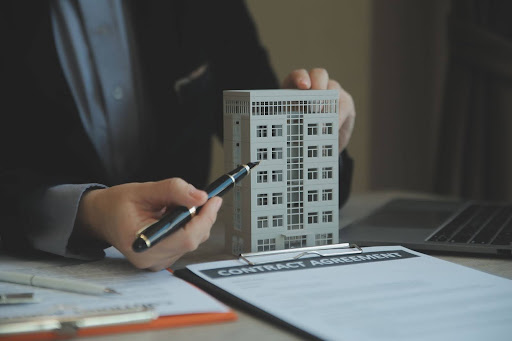Brisbane’s commercial scene is booming—with innovation hubs in the CBD, thriving retail corridors, and expanding suburban business centres, the city offers a wealth of opportunities for businesses of all sizes. Whether you’re a startup laying down roots or an established brand exploring new premises, the process of finding the right commercial property for lease in Brisbane can feel daunting.
This guide walks you through key considerations—grounded in real-world experience and industry insights—to help you lease smart, plan ahead, and avoid common (and costly) mistakes.
Define Your Business Needs First
Before you begin browsing listings, it’s critical to know what you’re looking for—beyond square footage.
- What does your business need today—and what will it need 12 months from now?
- Are your clients visiting the premises, or is it purely for staff and logistics?
- Do you need meeting rooms, storage, or specialty areas?
A digital agency might require open-plan workspaces and meeting pods, while a medical practice will need soundproofed consultation rooms and parking access. Understanding your functional requirements ensures you avoid under- or overcommitting on space.
Location Isn’t Just About Postcodes
It’s easy to gravitate toward flashy CBD towers—but location should support your business objectives, not just prestige.
- Inner-City Areas (e.g., Brisbane CBD, Fortitude Valley):
These offer prestige, convenience, and access to business hubs. They’re perfect for law firms, financial consultancies, or any brand looking to impress. But they come with high rent, competitive availability, and—let’s be honest—traffic nightmares. - Suburban Hubs (e.g., Newstead, Spring Hill, South Brisbane):
These areas are emerging stars. Often more affordable than CBD options, they offer a blend of accessibility, modern developments, and growing foot traffic. Think co-working spaces, tech startups, boutique clinics, or consultancies looking for value without sacrificing location. - Fringe & Industrial Areas (e.g., Rocklea, Archerfield, Eagle Farm):
Tailored for warehousing, distribution centres, trades, and logistics. These locations often provide more generous parking, easier freight access, and practical layouts suited to operational workflows.
Know Your Lease Types
Lease structures are the backbone of your financial and legal commitment. Understanding the three common lease types ensures you aren’t caught off-guard by hidden costs or lopsided responsibilities:
- Gross Lease: The landlord absorbs most outgoings (like property taxes, insurance, maintenance). It’s predictable and great for budgeting—but the rent is usually higher to compensate.
- Net Lease: You pay rent + some or all outgoings. This gives you more visibility into costs but requires meticulous tracking and budget forecasting.
- Modified Gross Lease: A custom mix of landlord and tenant responsibilities. You might cover maintenance and cleaning, while the landlord handles insurance and council rates.
Before signing anything, identify who’s responsible for cleaning, repairs, and reinstatement at lease-end. Some landlords require you to restore the space to its original condition, including carpet shampooing, paint touch-ups, and rubbish disposal. That’s where professional end of lease cleaning becomes a business necessity—not an afterthought.
Budget Beyond Just the Monthly Rent
Here’s a harsh reality: rent is just the beginning. Let’s say your monthly rent is $3,000. Seems reasonable, right? But factor in the following:
- Outgoings: Utility bills, council rates, strata levies.
- Fit-Out & Furniture: Desks, cabinetry, flooring, partitions, signage.
- Security Deposit & Legal Fees: Often 3-6 months’ rent in advance, plus lawyer fees.
- Maintenance: Air-conditioning servicing, light replacements, pest control.
Then there’s the exit budget. Many businesses overlook the fact that returning a property in lease-ready condition can be costly. Vacate cleaning—including carpet steam cleaning, window washing, and surface disinfection—is often contractually required. Landlords expect commercial spaces to be returned in the condition they were leased in (or better). Failing to do this can risk your bond and strain the business relationship.
Understand the Legal Fine Print
Think of your commercial lease as a legally binding business partnership. It dictates how you’ll operate, what changes you can make, and how the relationship ends.
Essential Legal Points to Review:
- Subletting and Assignment: Can you lease part of the space to another business if you downsize?
- Renovation Permissions: Do you need approval to add a partition, change the floor, or install new lighting?
- Signage: Are you allowed to put up visible branding on the exterior?
- Rent Increases: Is it fixed annually, CPI-based, or subject to market reviews?
- Early Exit: What happens if you need to vacate the space mid-term?
Finally, make sure you understand make-good obligations. Most commercial leases in Brisbane require tenants to return the property to its original condition. This almost always involves professional end of lease cleaning, disposal of waste, and potentially repainting and repair work.
Learn from Others: Mistakes to Avoid
Signing Too Quickly: In a hot property market, it’s tempting to jump on the first space that ticks your basic boxes. But haste can be costly. Failing to inspect alternative properties, compare incentives, or push for better terms can leave you overpaying—or locked into an inflexible contract. Always negotiate—and don’t just accept the first draft lease.
Misjudging Space Needs: This is one of the most common traps. A beautifully designed space might feel perfect now, but what happens when you scale from 5 to 15 team members? Or pivot into a new service line requiring more equipment?
Conversely, many startups overestimate and end up paying for unused square footage—money that could’ve funded marketing or tech upgrades.
Ignoring Fit-Out Restrictions: Not all commercial spaces are as adaptable as they appear. Some buildings—especially heritage or strata-managed ones—restrict structural changes, lighting upgrades, wall installations, or external signage.
Failure to secure written approval for changes can result in lease breaches, or worse—having to remove everything at your own cost.
Use the Right Tools and Resources
Navigating Brisbane’s commercial real estate scene becomes easier—and smarter—when you harness the right tools. These aren’t just conveniences; they help you make informed decisions, avoid hidden costs, and ensure your business is legally compliant.
- Property search portals: Commercial Real Estate, Lease.com.au, uTenant
- Budget calculators: Factor in hidden lease costs
- Brisbane City Council zoning maps: Ensure your business type is permitted
Inspection Checklist: Your Due Diligence Weapon
Whether you build your own or ask your agent, an inspection checklist helps evaluate:
- Electrical and data points
- Heating/cooling functionality
- Wall and floor condition
- Fire safety compliance
- Parking and loading access
- Cleanliness and fit-out quality
Think Exit Before Entry
Planning your exit strategy before moving into a commercial property is one of the smartest decisions you can make. Whether your lease spans 12 months or five years, it’s important to understand your make-good obligations—like removing fit-outs, repainting walls, or restoring flooring. Many leases require professional end of lease cleaning, and overlooking these terms can lead to unexpected costs or bond deductions.
To simplify the process, Brisbane businesses often turn to trusted providers like Ozclean, who specialise in detailed, lease-compliant cleaning services. Engaging professionals early ensures you leave the property in top condition, fulfil your legal obligations, and maintain a strong reputation with landlords. A well-planned exit not only protects your finances but also sets the stage for a smoother transition to your next space.
Conclusion: Smart Leasing is Strategic Leasing
Securing the right commercial property for lease in Brisbane isn’t just about signing a dotted line—it’s about laying the foundation for your business’s future. From understanding your operational needs and mastering lease types to budgeting wisely and planning your exit, every step matters.
Whether you’re moving into a modern co-working space in the CBD or setting up shop in the industrial heart of Northgate, make sure your decisions are backed by clear information, local insight, and professional support.






